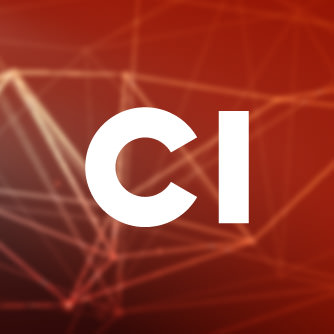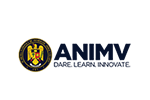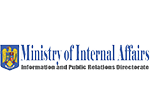Credits
- MOOC coordinators Manuel Gértrudix Barrio & Rubén Arcos Martín
- Content written by Rubén Arcos Martín
- Multimedia design by Alejandro Carbonell Alcocer
- Visual Identity by Juan Romero Luis
Analysis and assessment of information campaigns
as a part of hybrid threat influence operations
Cyber/Information as a security domain. Individuals and institutions as the targets of hostile state and non-state actor activities: addressing the security challenge
A modified version of Lasswell’s construct (“Who says what, in which channel, to whom, with what effect?” ), in one of his variations, provides a structured framework for addressing the post-event analysis and assessment of information campaigns as a part of hybrid threat influence operations:
Source: Arcos 2018 based on Laswell 1948,1968
The model captures the structure of the communication process and considers the information (or disinformation) and opinion source, its capabilities and intentions, and effects produced (cognitive, affective, and behavioral impacts, as well as outcomes) by disseminating specific communication content (key messages) to targeted audiences.
Methodology and Resources
- Arcos, Rubén (2018). "Post-Event Analysis of the Hybrid Threat Security Environment: Assessment of Influence Communication Operations," Hybrid CoE Strategic Analysis Papers (October 2018), The European Centre of Excellence for Countering Hybrid Threats. Available at: hybridcode
- Arcos, Rubén (2019a). “Covert Operations,” in: The Conduct of Intelligence in Democracies: processes, practices, cultures, edited by Matei, F. C. and Halladay, C. (Boulder: Lynne Rienner): 97-106.
- Arcos, Rubén (2019b). “Old covert influence tools for the hybrid threat playbook,” Paper prepared as a read-ahead for the Experts Panel “Countering Hybrid Threats in the Mediterranean and Black Sea Regions, NMIOTC, Chania, Greece 17-19 September 2019”.
- Arcos, Rubén (2019c). “Democratization of the production and dissemination of (disinformation) content in the cyber domain. an everything fake scenario in the horizon?” Presentation at the Seminar Information in the era of Hybrid Threats, 5 December 2019, Espoo, Finland.
- Arcos, Rubén. “Securing the Kingdom’s cyberspace: cybersecurity and cyber intelligence in Spain,” in Routledge Companion to Global Cyber-Security Strategy, edited by Scott N. Romaniuk and Mary Manjikian, Routledge, forthcoming 2020 (submitted on 28 July, 2019, and under contract).
- Arcos, Rubén. “Information influencing in the Catalan illegal referendum and beyond,” in Hybrid Warfare: Security and Asymmetric Conflict in International Relations, edited by Mikael Weissmann, Niklas Nilsson, Per Thunholm, and Björn Palmertz, I.B. Tauris, forthcoming 2020 (submitted on 31 October 2020).
- Bienkov, Adam (2012). “Astroturfing: what is it and why does it matter?” The Guardian, 8 February 2012
- CCN (2019). Disinformation in Cyberspace, CCN-CERT BP/13, February 2019. Available at CCN-CERT
- Daniel, Donald C. and Herbig, Katherine L. (1980). “Propositions on military deception,” in Donald C. Daniel et al. (1980). Multidisciplinary perspectives on military deception, Final Report for Period January 1979 - October 1979, (Monterey: Naval Postgraduate School): 5-44 Available at: Academia.net
- Department of National Security (DSN) (2019). Informe Anual Seguridad Nacional 2018. Ministerio de la Presidencia, relaciones con las Cortes e Igualdad. Marzo 2019 Available at: DSN.GOB
- Cohen, Bernard C. (1993) [1963]. The Press and Foreign Policy, Princeton University Press.
- Druckman, James N. (2010). Foreword, in Doing news framing analysis: empirical and theoretical perspectives, edited by Paul D’Angelo and Jim A. Kypers (New York: Routledge): xiii - xiv
- Entman, Robert M. (1993). “Framing: Toward clarification of a fractured paradigm,” Journal of Communication; Autumn 1993; 43, 4: pg. 51-58.
- European Commission (2016) Joint Framework on countering hybrid threats a European Union response, Joint Communication to the European Parliament and the Council. JOIN/2016/018 final. Available at: Eur.lex.europa.eu
- Feezell, Jessica T. (2018). “Agenda Setting through Social Media: The Importance of Incidental News Exposure and Social Filtering in the Digital Era,” Political Research Quarterly 71(2): 482-494.
- United States House Permanent Select Committee on Intelligence (1982). Soviet active measures: hearings before the Permanent Select Committee on Intelligence, House of Representatives, Ninety-Seventh Congress, second session, July 13, 14, 1982. Washington, DC: US Government Printing Office.
- Lefebvre, V.A. (1969). “Devices that optimize their performance as a result of human counteraction,” Problemy Evristiki, Moscow, “Vysshaya schkola”, pp. 243-254
- McCombs, Maxwell (2004). Setting the agenda: the mass media and public opinion. Cambridge: Polity Press.
- McCoombs, Maxwell et al. (2015). The news and public opinion: media effects on civic life. Cambridge: Polity Press.
- McMahon, John (1980), Testimony of John McMahon, CIA Deputy Director for Operations, in: United States House Permanent Select Committee on Intelligence (1980). Soviet covert action (the forgery offensive): hearings before the Subcommittee on Oversight of the Permanent Select Committee on Intelligence, House of Representatives, Ninety-Sixth Congress, second session, February 6, 19, 1980. Washington, DC: US Government Printing Office. Available at: Njlaw
- Mitrokhin, Vasiliy (2006). KGB lexicon: the soviet intelligence officer’s handbook. Oxon: Routledge.
- NATO (2016). Warsaw Summit Communiqué, Issued by the Heads of State and Government participating in the meeting of the North Atlantic Council in Warsaw 8-9 July 2016 Available at: NATO
- Pamment, J., Nothhaft, H., & Fjällhed, A. (2018). Countering Information Influence Activities: The State of the Art. MSB.
- Varol, Onur; Ferrara, Emilio, Davis, Clayton A., Menczer, Filippo, and Alessandro Flammini (2017). Online Human-Bot Interactions: Detection, Estimation, and Characterization. International AAAI Conference on Web and Social Media, North America, may. 2017. Available at: Aaai.org






